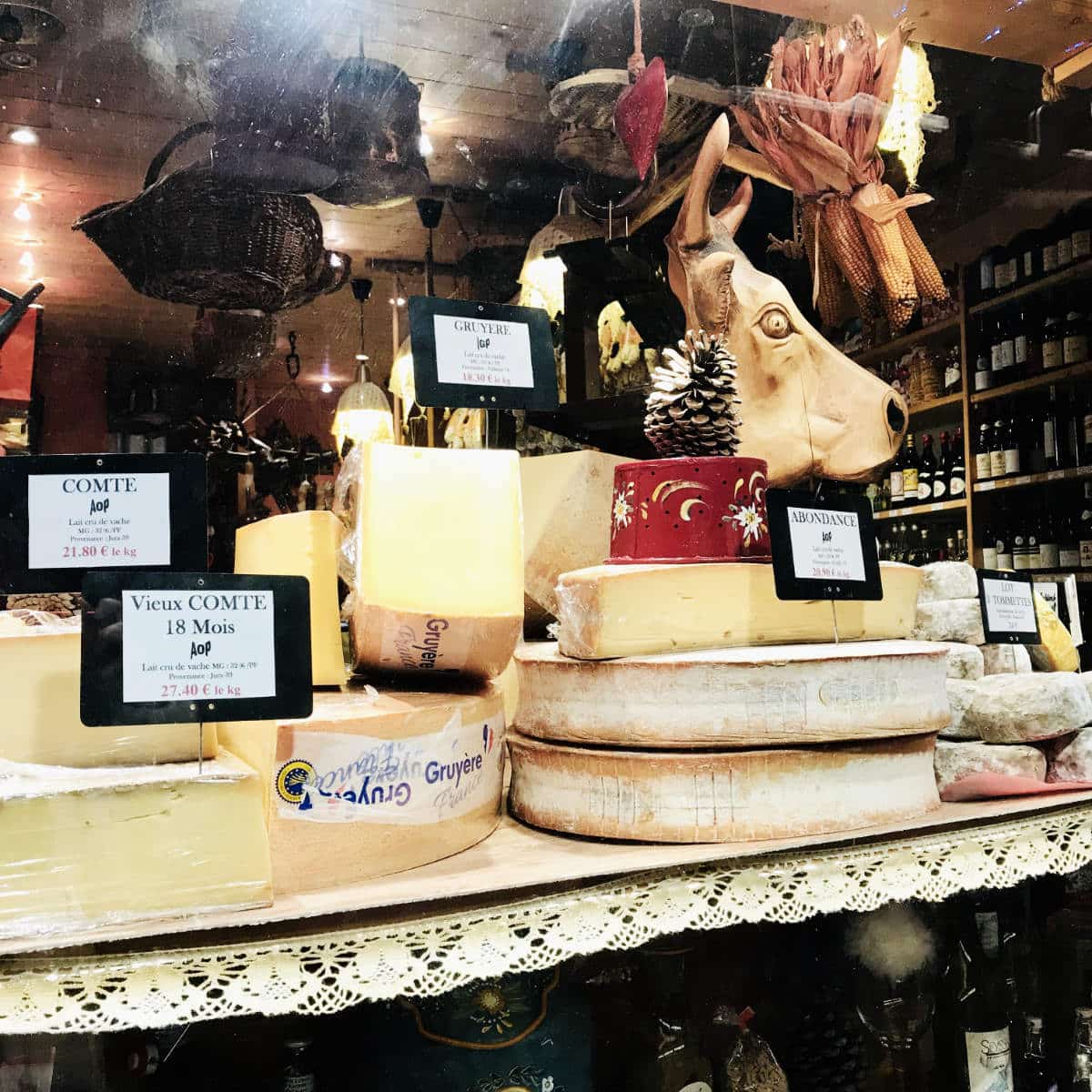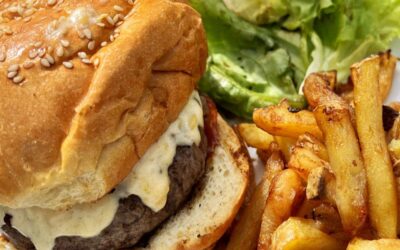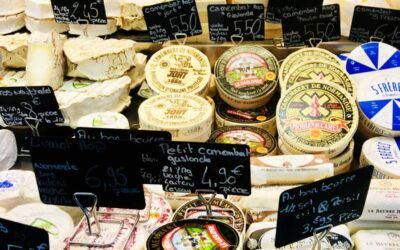You may not have realized that there was a full set of french etiquette rules just for cheese, but now you know. The cheese course is a mainstay in France. So it stands to reason that there is a certain amount of cheese etiquette from the country that invented the word “etiquette“!
Ok, maybe it is just the French bourgeoisie who enforce those etiquette rules today, but nevertheless there is a proper way to cut cheese, in case you were unaware 😉 So let’s find out more about these cheese etiquette rules, shall we? Allons-y!
- 1. When to serve Cheese in France
- 2. No industrial breads
- 3. Cheese is not stinky
- 4. Serve an odd number of cheeses
- 5. Cheese should be served at room temperature
- 5. Cutting the cheese
- 6. Don't spread the cheese
- 7. Tear the bread with your hands
- 8. Cheese size should match the bread size
- 9. Start with the mildest cheese first
- 10. One type of cheese per bread
- 11. Pay attention to the knife
- 12. Slice thin pieces
- 13. Know when to eat the rind
- 14. Pass the cheese
1. When to serve Cheese in France
First of all, you should know that the french cheese plate is not an appetizer before the boeuf bourguignon comes out.
Cheese is only served on one of two occasions: if a full starter-main-dessert is being presented, it is served after the main meal, right before dessert. On the other hand, if it is intended to be a casual party, it is served with a charcuterie board at an apéro party along with other finger foods.
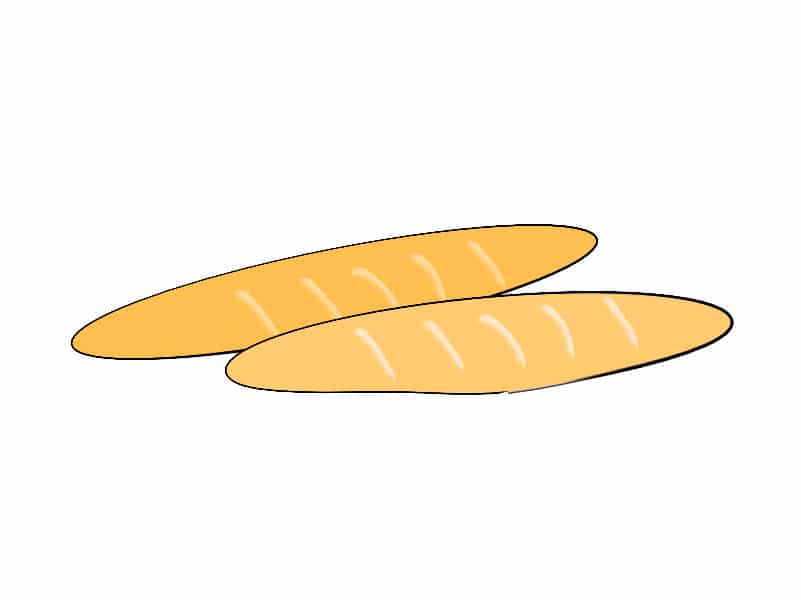
2. No industrial breads
Good cheese calls for good bread. Whether you get a baguette or another type of bread, make sure it is fresh. And unless the cheese course is at an apéro, no crackers please!
3. Cheese is not stinky
Some cheeses give off a stronger scent than others. If you must comment on the smell quotient of a particular cheese, it is more polite to call the cheese “strong” that go “eww, that stinks!”
Calling it sticky would be rude in any language, but considering cheese is a considered part of France’s gastronomical heritage, this is a big no-no.

4. Serve an odd number of cheeses
For presentation purposes as a host, choose an odd number of cheeses for your cheese platter. There isn’t a real reason for this, it just looks nicer. (I mean, if you are really stuck on an even number of cheeses for whatever reason, I suppose it is fine. I’m not one to judge!)
5. Cheese should be served at room temperature
French etiquette states that the cheese should be taken out of the fridge 1 hour before serving. This seems too long to me, especially in summer when Parisian apartments don’t have air conditioning.
I would recommend taking out the cheese, unwrapping, and placing it on the plate about 15 minutes before serving.
5. Cutting the cheese
There are a whole host of rules to cutting the cheese (I dare you to not laugh), but here is the cliff-notes version:
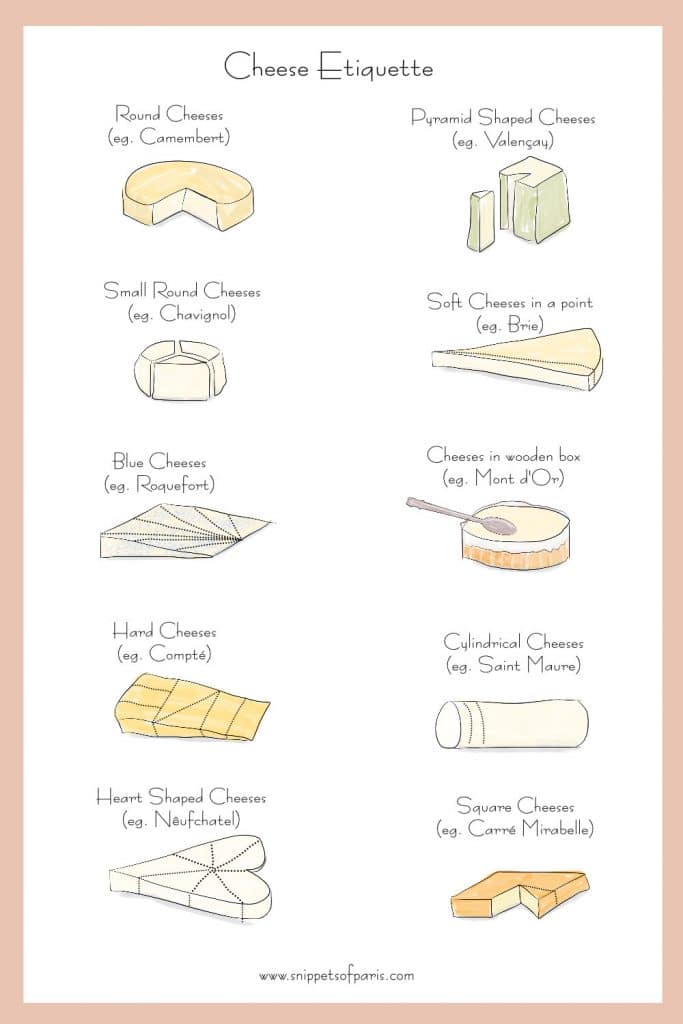
The basic premise is to not leave any one person with an excessive amount of rind, but rather than everyone shares. This results in somewhat creative cutting, such as the heart-shaped Nêufchatel.
6. Don’t spread the cheese
Even if it is a soft cheese like brie, the cheese is not meant to be smeared across the bread. Just layer it on top like you would foie gras (yes, foie gras is also not meant to be spread), and bite into it.
If you are having melted cheese, on the other hand, like a baked camembert, you can smear it on with a knife.
7. Tear the bread with your hands
The bread and cheese is not meant to be eaten like a sandwich.
The host will normally cut the baguette into 2 inch wide portions. After you serve yourself as a guest, you are meant to tear it with your hands into smaller pieces and layer your cheese on top, like a tiny amuse-bouche (bite-size hors-d’oeuvre).
8. Cheese size should match the bread size
In terms of proportions, don’t go for a giant hunk of cheese on top of a little tiny piece of bread, or vice versa. It looks strange.
This may seem obvious, but I too have been tempted into rather odd combinations when I’ve had too much cheese or not enough bread to finish off the plate, without taking more. (Yes, because French etiquette generally requires that you finish your plate.)
9. Start with the mildest cheese first
Normally for a cheese plate, you should start tasting the mildest cheese first, moving up in strenght to the strongest. (It is the same rule at a wine tasting, so that the stronger flavors don’t overcome the lighter ones.)
Blue cheese always is the last one tasted, since the taste is quite strong.
10. One type of cheese per bread
Don’t combine the cheeses on your bread. That camembert slice should not be layered on top of the goat cheese while eating.
11. Pay attention to the knife
The knife issue is a tricky one in terms of cheese etiquette. Sometimes the cheese plate will come out with multiple cheese knives, in which case each knife should remain with the first cheese it was used to cut (i.e. it is not your new personal knife).
Other times there will be one knife on the cheese plate, in which case you should wipe off any excess cheese on your bread before using that knife to tackle a new cheese.
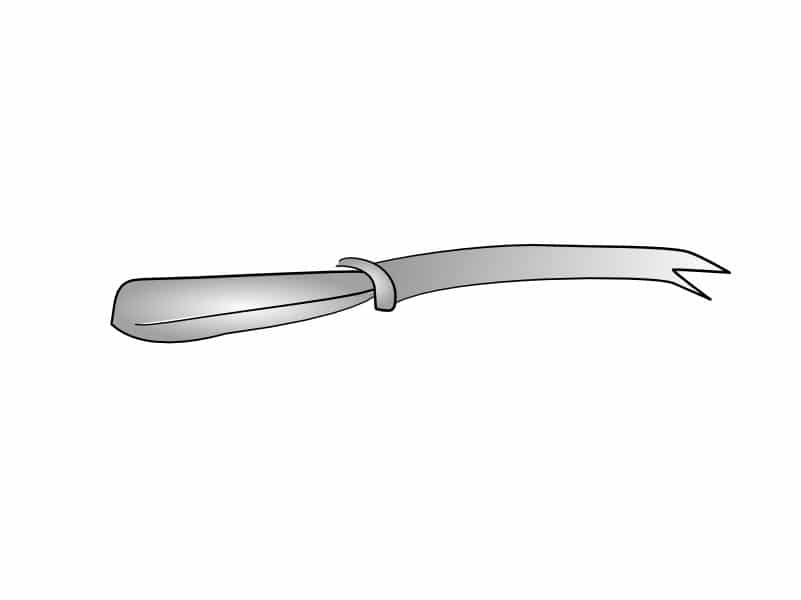
12. Slice thin pieces
That cheese may be delicious, but you are not meant to serve yourself a giant chunk of it. The portion you cut for yourself should be about as thick as your pinkie finger.
In addition, do not take more than three cheeses at any one time. You should also not ask to be re-served, remember this is after you have supposedly already enjoyed a main dish.
However, if the cheese is offered to you a 2nd time you may accept.
13. Know when to eat the rind
The rind is another thorny issue for cheese lovers. In general the rule is:
- Hard cheeses: don’t eat the rind.
- Soft cheese: eat the rind.
- Goat cheese: eat the rind.
- Blue cheese: eat the rind.
14. Pass the cheese
A cheese plate is usually passed around the table, so there is a specific route that it is supposed to take. The plate should be passed from the oldest to the youngest, all the female guests first, and then males. (This is better than our female wine etiquette controversy, so we’ll take it!)
Shop Favorites:

Hopefully, you enjoyed reading about the French cheese etiquette rules, and I wish you luck in avoiding any cheese-gate incidents! You can read more about the different types of French cheeses and the best wine and cheese pairings here. A bientôt and bon appétit!
